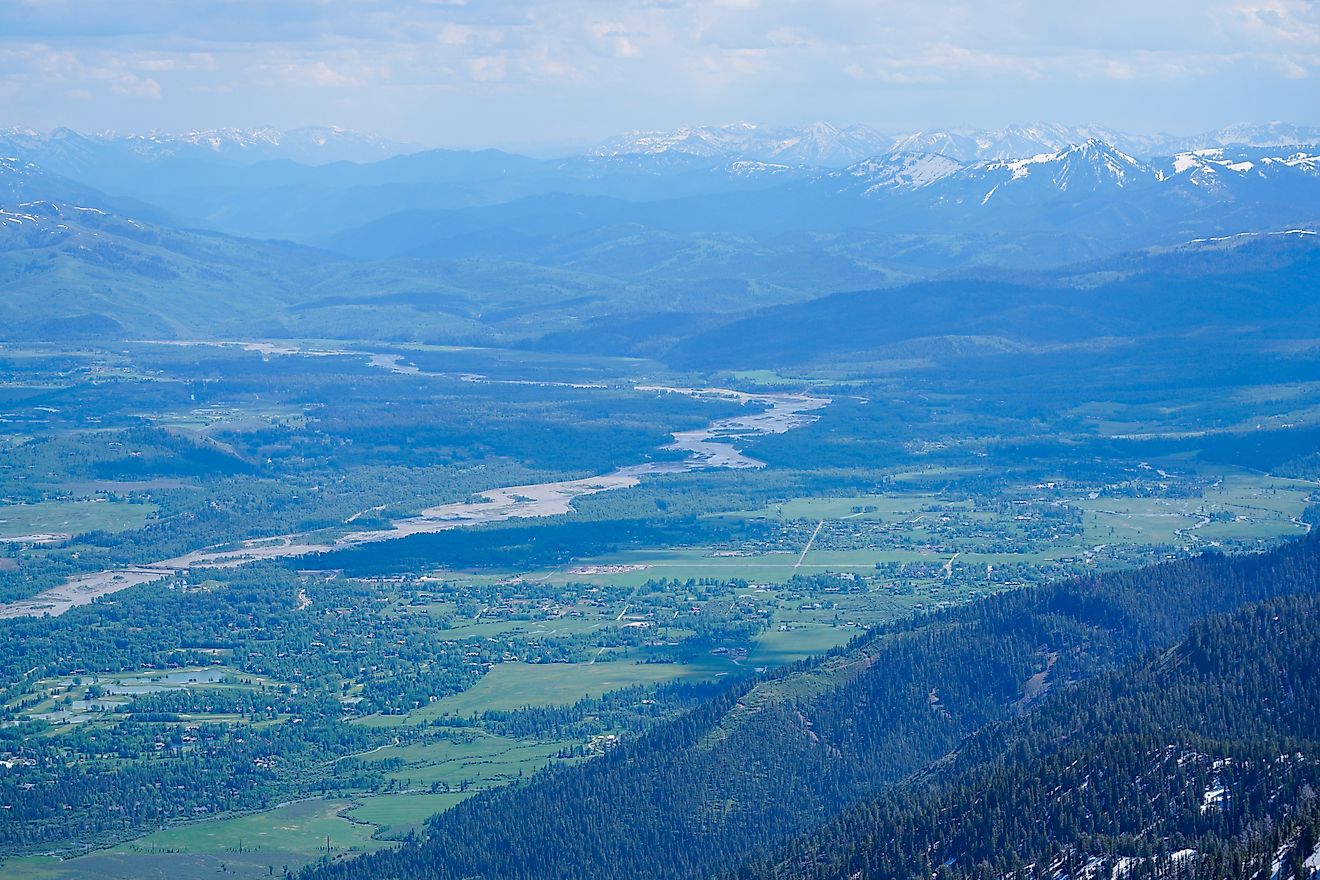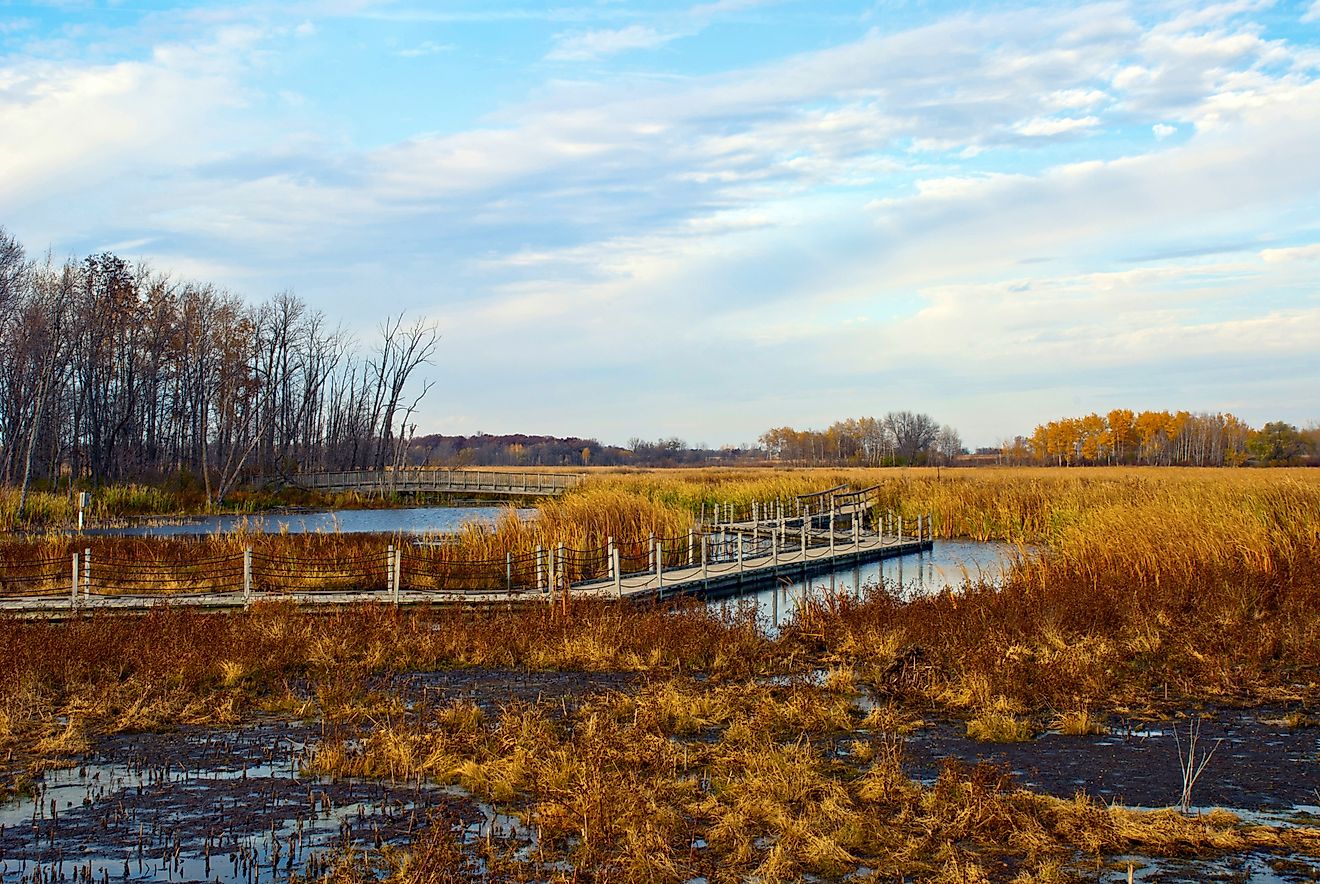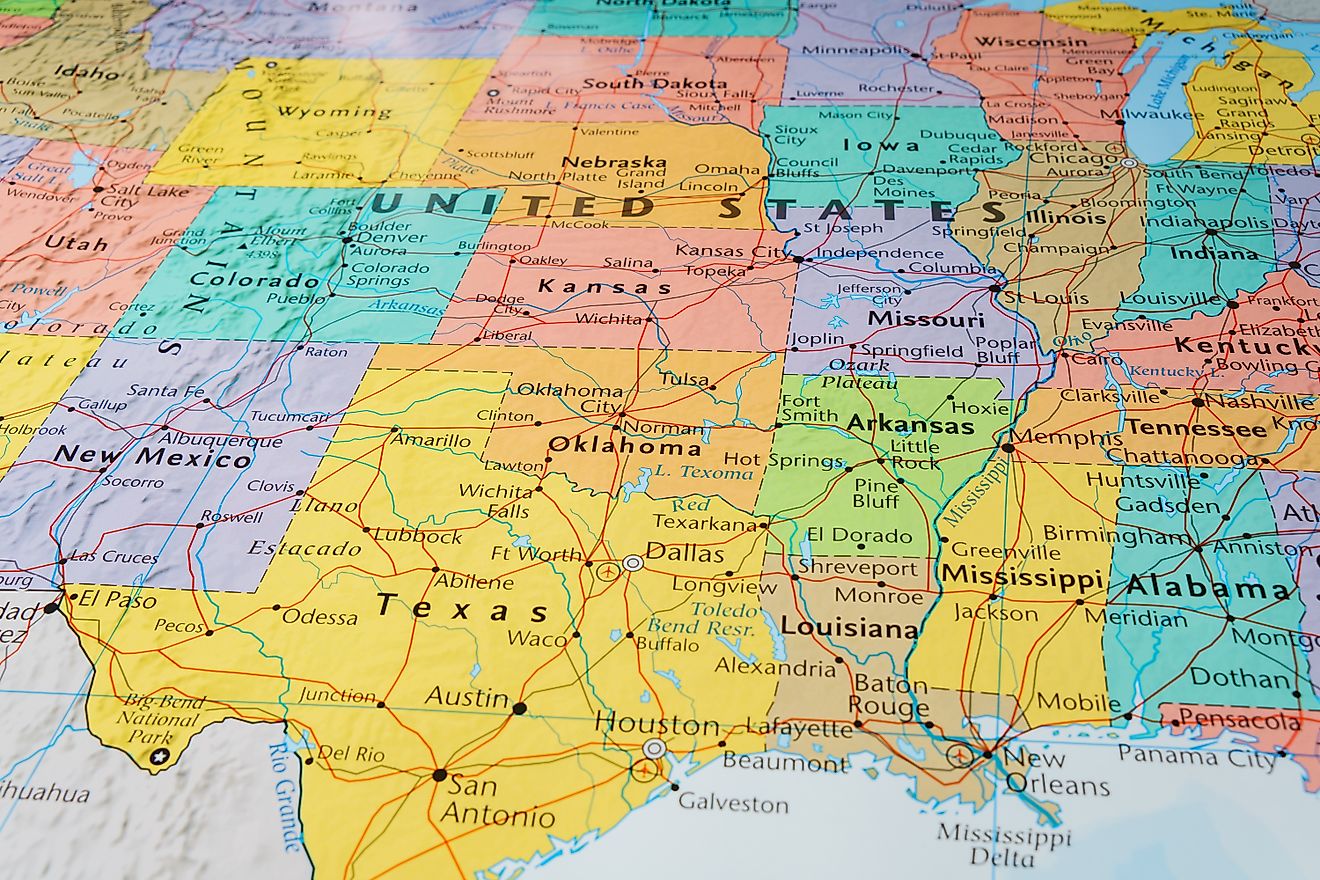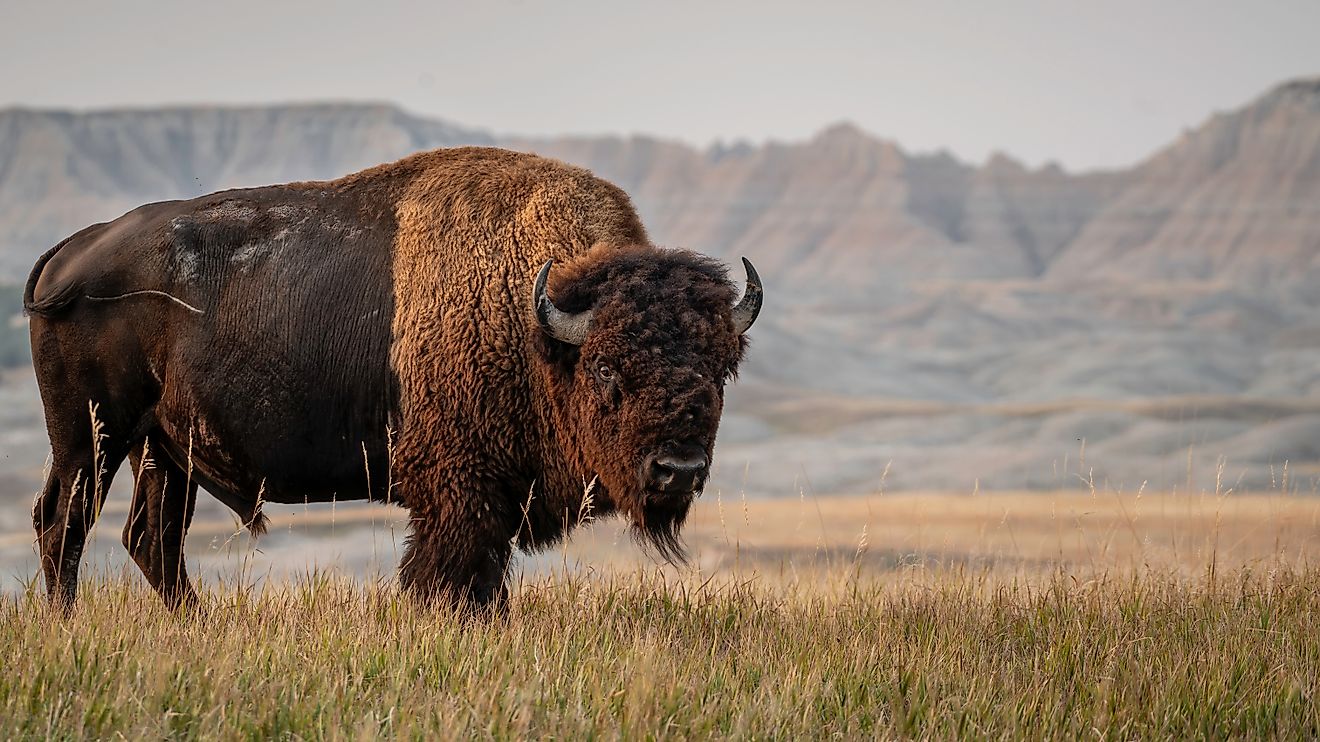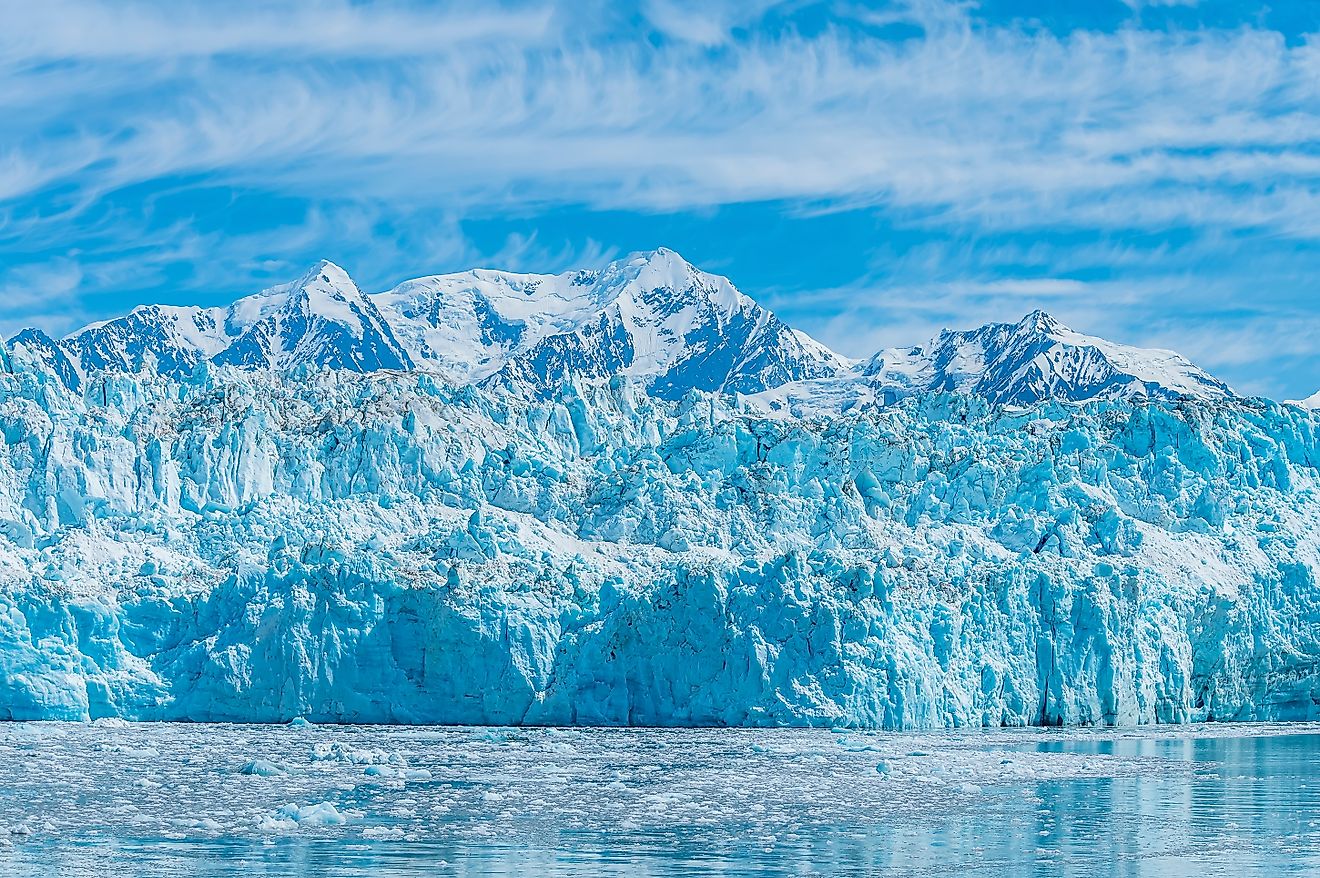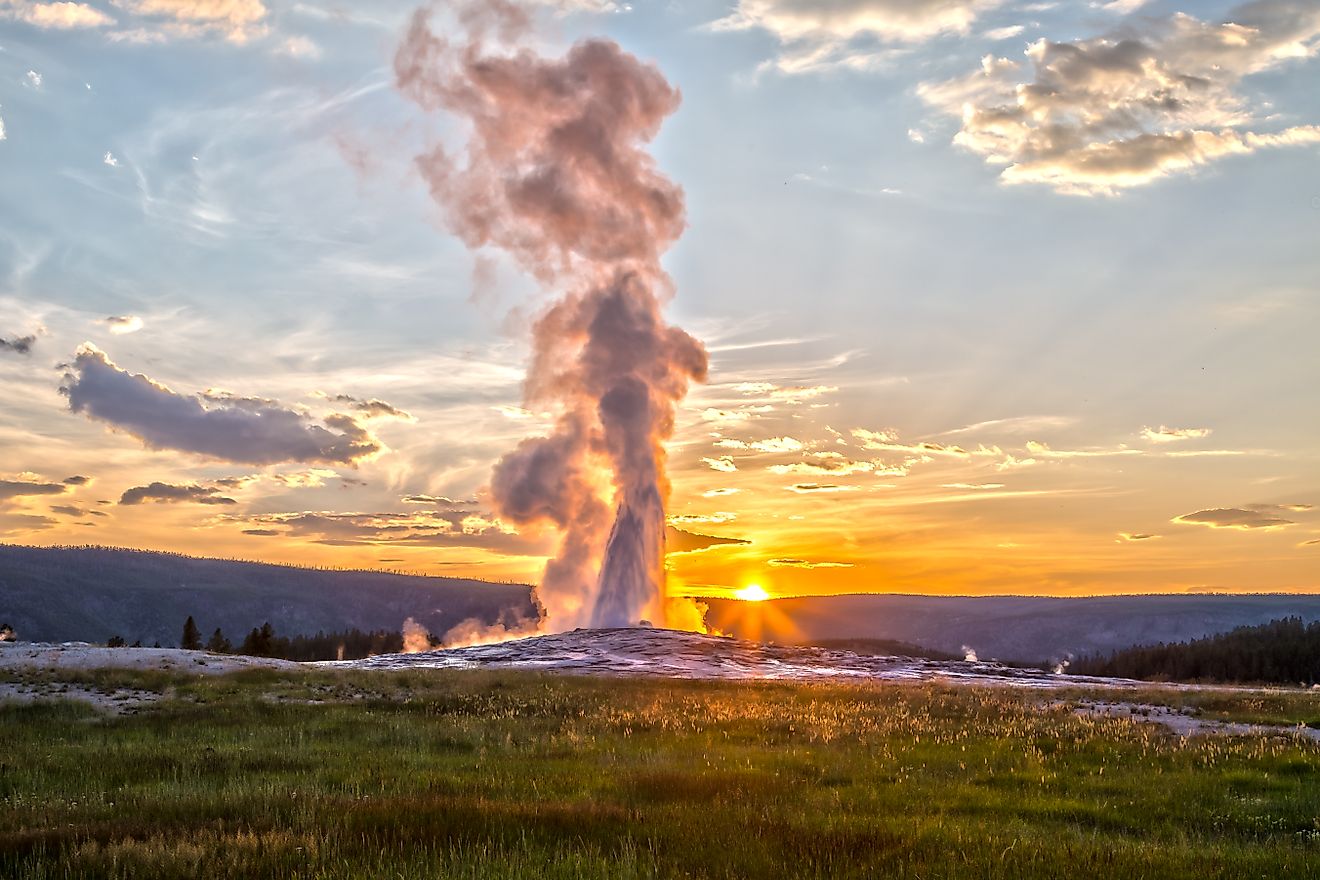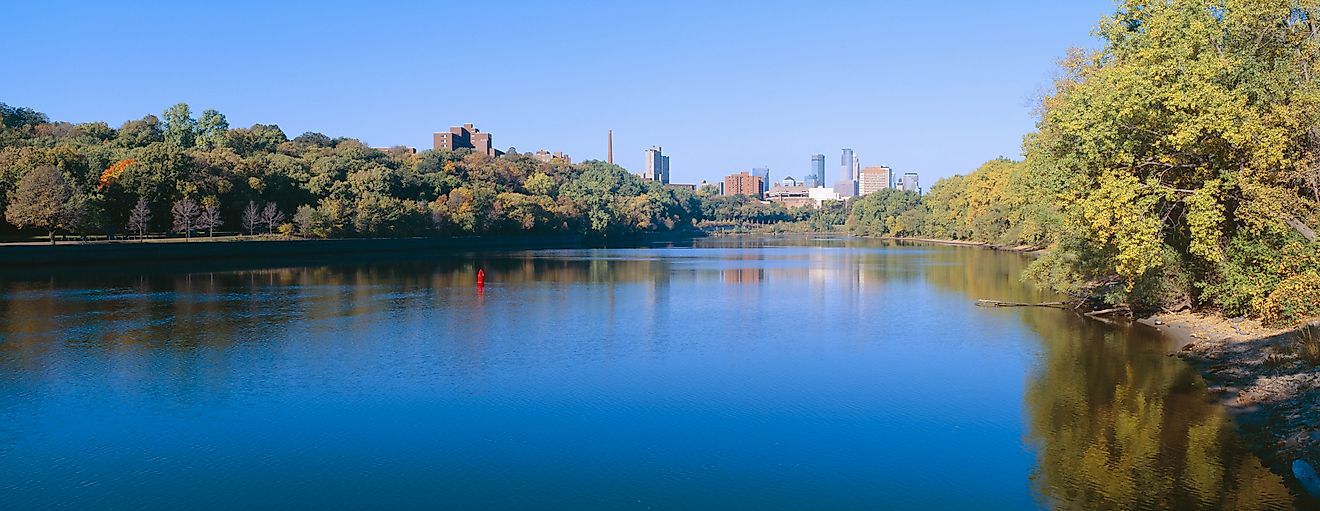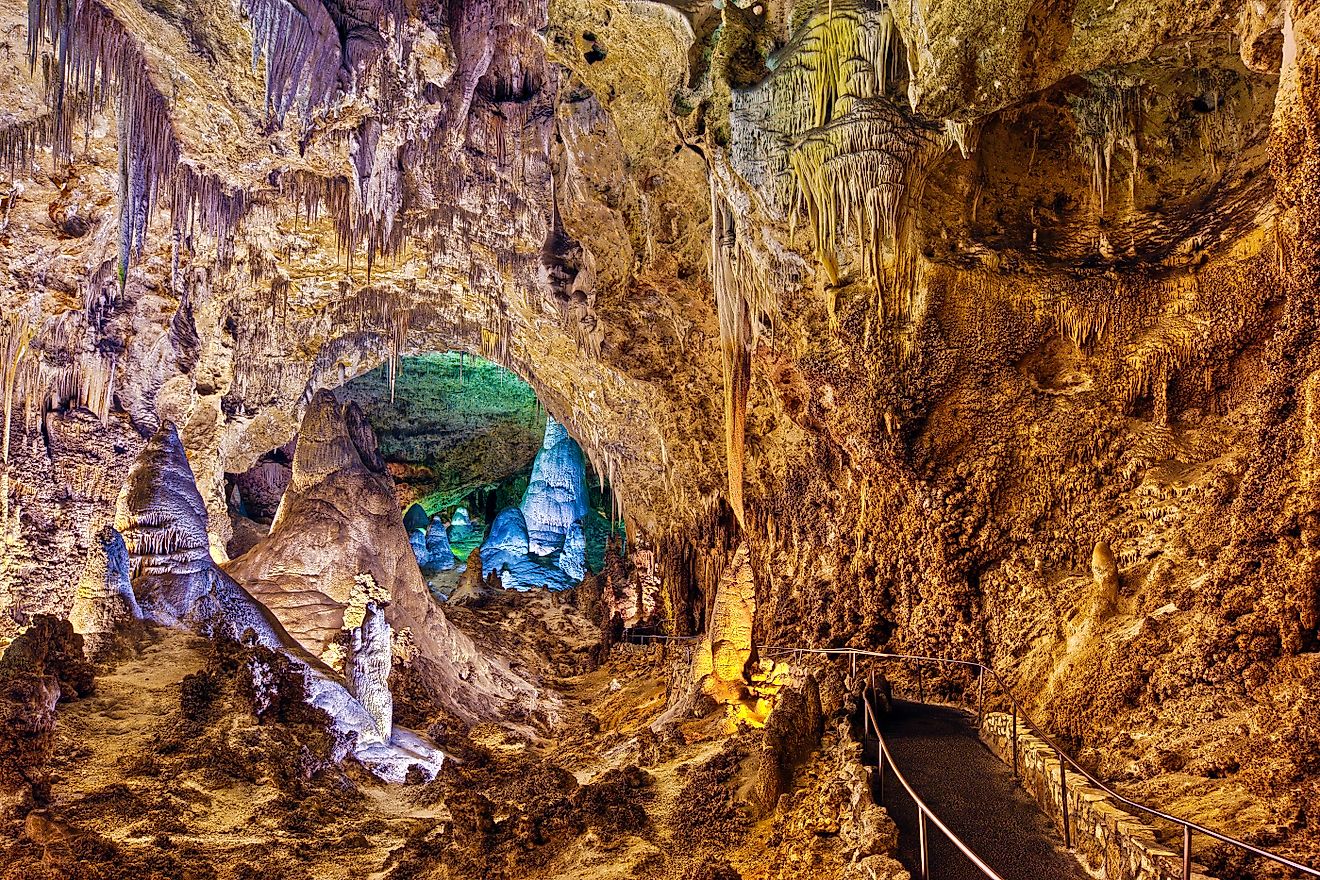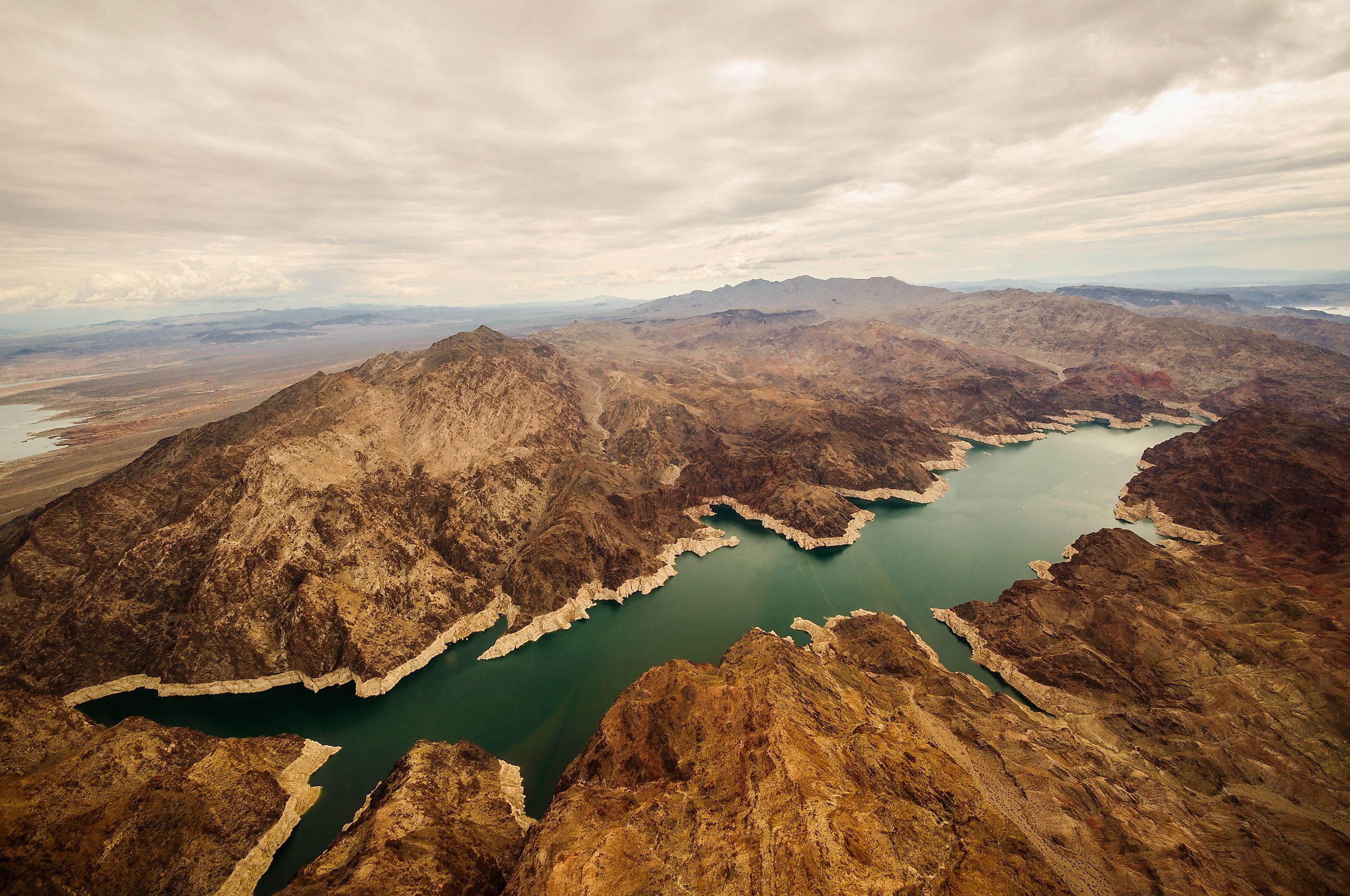
The Largest Man-Made Lakes in The US
They weren’t carved by glaciers or shaped by ancient rivers—these colossal bodies of water were built by human hands. Towering dams, vast reservoirs, and entire towns submerged beneath the surface tell the story of how the United States engineered some of the largest lakes in the world. From fueling hydroelectric power to shaping the recreation scene in the American West and South, these artificial giants are more than just massive—they're transformative.
Let’s dive into some of the largest man-made lakes in the US, where scale, ambition, and utility collide on a staggering scale.
Lake Mead, Nevada/Arizona
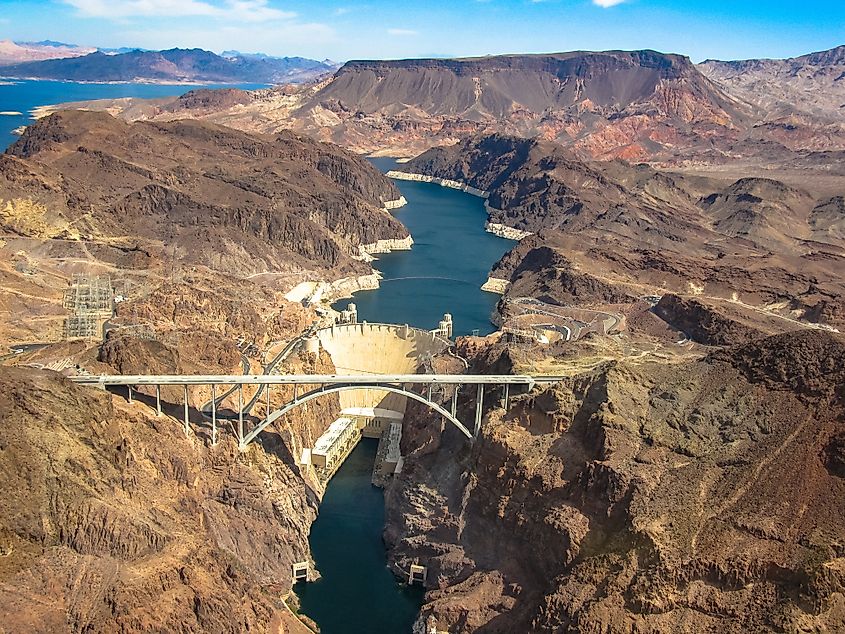
-
Capacity: 28.9 million acre-feet
-
Surface Area: ~247 square miles
-
Created by: Hoover Dam (1936)
Lake Mead is the heavyweight champion of US reservoirs. Formed by the construction of the Hoover Dam on the Colorado River, it straddles the border between Nevada and Arizona. At full capacity, it can hold nearly 29 million acre-feet of water, making it the largest reservoir in the nation by volume.
Though prolonged drought and climate change have dropped its water levels significantly in recent years, Lake Mead remains essential. It supplies water to over 25 million people in Nevada, Arizona, California, and even Mexico. The lake also generates hydroelectric power for the region and supports recreation within the Lake Mead National Recreation Area—one of the most visited units in the National Park System.
Notable features: Hoover Dam, Black Canyon, popular for boating, kayaking, and scuba diving amid flooded desert scenery.
Lake Powell, Utah/Arizona

-
Capacity: 24.3 million acre-feet
-
Surface Area: ~254 square miles
-
Created by: Glen Canyon Dam (1963)
Lake Powell is a labyrinth of flooded red rock canyons and twisting waterways that stretch across southern Utah into northern Arizona. It’s the second-largest reservoir in the US by capacity, holding 24.3 million acre-feet when full.
Formed by the Glen Canyon Dam on the Colorado River, Lake Powell is a crucial storage component of the Colorado River Basin. It helps regulate water delivery downstream and generates hydroelectric power. Despite ongoing controversy about its environmental impact—including the loss of Glen Canyon’s natural wonders—the lake remains a major recreation destination, especially for houseboat vacations and canyon exploration.
Notable features: Rainbow Bridge National Monument, hundreds of side canyons, striped sandstone formations.
Lake Sakakawea, North Dakota

-
Capacity: 23.8 million acre-feet
-
Surface Area: ~368 square miles
-
Created by: Garrison Dam (1956)
Named after the famed Shoshone guide Sakakawea, this massive reservoir in central North Dakota is the third-largest man-made lake in the US. It stretches over 178 miles and holds nearly 24 million acre-feet of water at capacity.
Lake Sakakawea plays a vital role in flood control, irrigation, navigation, and energy production along the upper Missouri River. It also supports a rich ecosystem and is a hub for fishing—particularly for walleye, northern pike, and chinook salmon.
Notable features: Fort Stevenson State Park, long undeveloped shorelines, and expansive open-water views across the northern prairie.
Lake Oahe, South Dakota/North Dakota
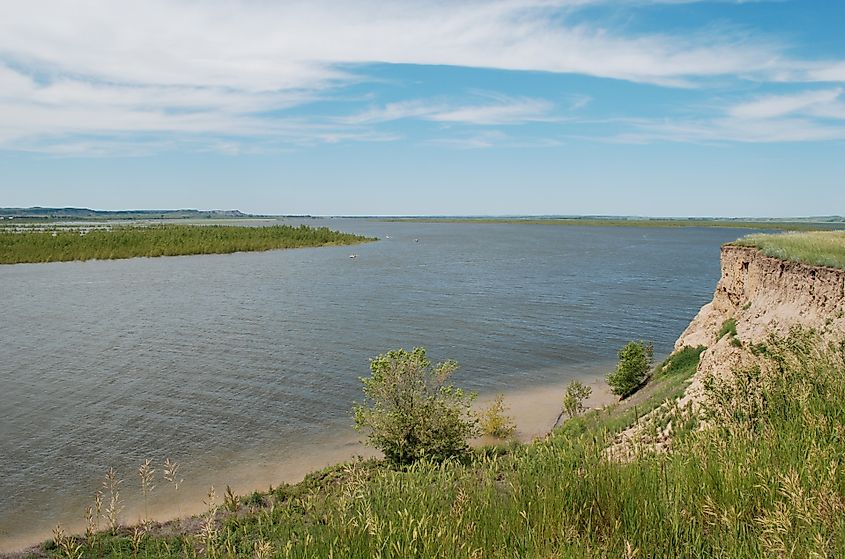
-
Capacity: 23.5 million acre-feet
-
Surface Area: ~370 square miles
-
Created by: Oahe Dam (1962)
Running north-south along the Missouri River, Lake Oahe is a close sibling to Sakakawea, just downstream. It's the fourth-largest reservoir in the US and stretches from Pierre, South Dakota, to Bismarck, North Dakota.
Built during the post-war era of large-scale dam building, Lake Oahe was a centerpiece of the Pick-Sloan Missouri Basin Program. Today, it serves hydropower, water supply, flood control, and recreation needs across the Northern Plains.
Notable features: Rich fishing grounds (including trophy salmon), vast camping and boating areas, and remote, rugged scenery.
Fort Peck Lake, Montana

-
Capacity: 18.7 million acre-feet
-
Surface Area: ~245 square miles
-
Created by: Fort Peck Dam (1940)
Fort Peck Lake lies in eastern Montana and was one of the earliest and most ambitious public works projects under President Franklin D. Roosevelt’s New Deal. Constructed by the Army Corps of Engineers during the Great Depression, the dam that formed this reservoir was the world’s largest earthen dam at the time.
With nearly 19 million acre-feet of capacity, Fort Peck Lake is the largest in Montana and offers hundreds of miles of wild, rugged shoreline—much of it protected as part of the Charles M. Russell National Wildlife Refuge.
Notable features: Wildlife-rich landscapes, dinosaur fossil sites nearby, excellent hunting and fishing opportunities.
Franklin Roosevelt Lake, Washington
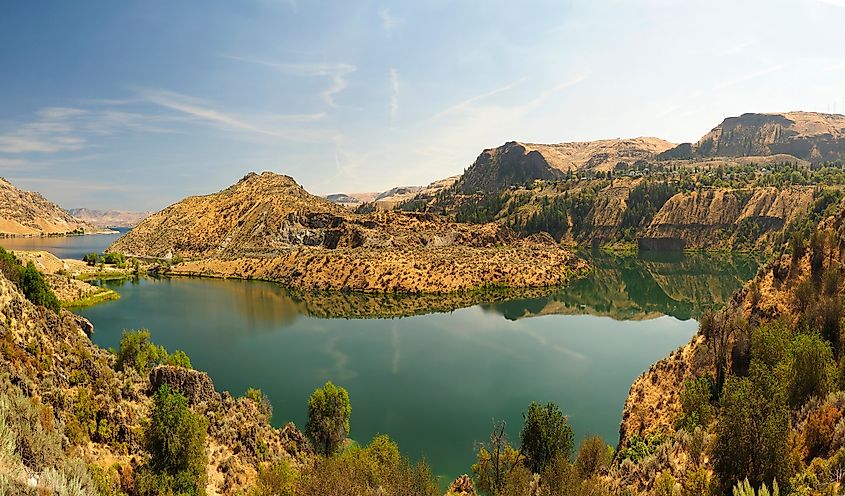
-
Capacity: 9.4 million acre-feet
-
Surface Area: ~125 square miles
-
Created by: Grand Coulee Dam (1941)
Named for President Franklin D. Roosevelt, this long, narrow reservoir was formed by the Grand Coulee Dam—one of the most powerful hydroelectric projects in the world. Located in northeastern Washington, the reservoir backs up the Columbia River for over 150 miles.
Though smaller in capacity compared to others on this list, Lake Roosevelt is vital for water storage, power generation, and irrigation throughout the Columbia Basin. The surrounding area is rich in cultural history, with several Native American tribes connected to the land and water.
Notable features: Lake Roosevelt National Recreation Area, Coulee Corridor Scenic Byway, and historic archaeological sites.
Shasta Lake, California
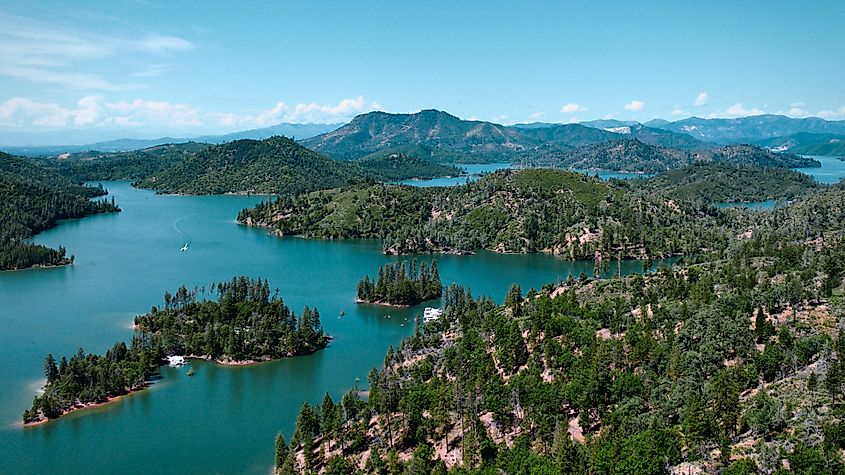
-
Capacity: 4.5 million acre-feet
-
Surface Area: ~47 square miles
-
Created by: Shasta Dam (1945)
Tucked into the forested mountains of Northern California, Shasta Lake is the largest reservoir in the state and one of the most important components of the Central Valley Project, a massive irrigation and water delivery system.
Though it holds less water than other entries on this list, its role is disproportionately large: Shasta Lake stores and supplies water to the Central Valley, one of the most productive agricultural regions in the world.
Known for its distinct "fingers" of flooded valleys and emerald green water, Shasta Lake is also a premier recreation spot, especially for houseboating, water skiing, and bass fishing.
Notable features: Mount Shasta views, Shasta Caverns, and houseboat rentals.
The Role of Man-Made Lakes in the US
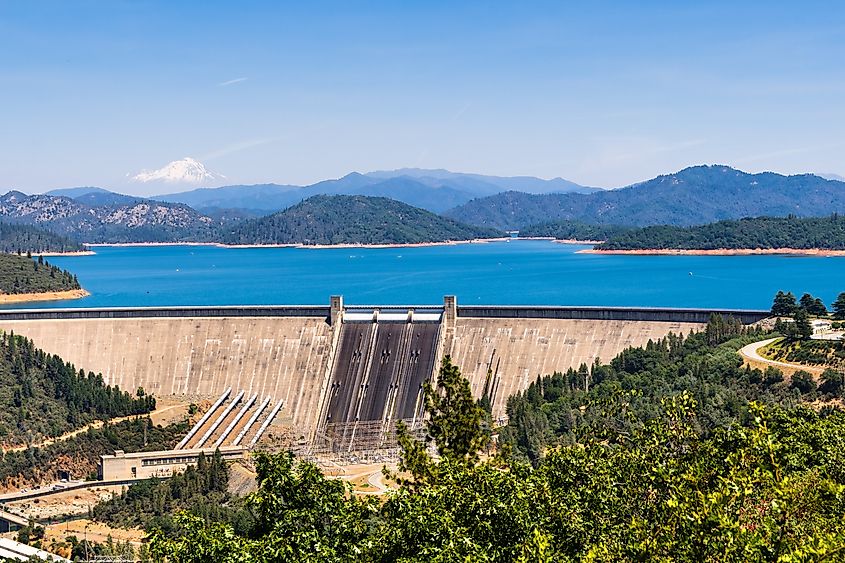
These seven massive lakes aren’t just big—they’re essential. Together, they store trillions of gallons of freshwater. Here’s why that matters:
-
Water Security: Reservoirs help deliver consistent water supplies to cities, farms, and rural areas, especially in arid regions.
-
Power Generation: Many of these lakes are part of hydroelectric systems that supply renewable energy to millions.
-
Flood Control: They protect downstream communities from destructive floods by regulating river flow.
-
Recreation & Economy: They support tourism, fishing, and boating industries that generate billions of dollars each year.
-
Environmental Tradeoffs: Large dams also disrupt ecosystems, fish migrations, and Indigenous lands—raising complex ethical and environmental questions.
Where Engineering Meets the Endless Horizon
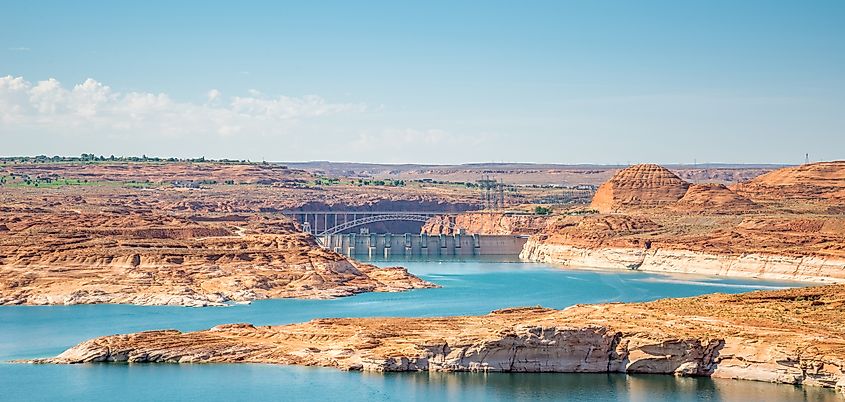
The largest man-made lakes in the US are more than just engineering marvels—they’re essential to the country’s infrastructure and economy. Yet they also come with environmental and social complexities that are still being reckoned with today.
Whether you’re standing at the base of Hoover Dam, boating through red rock canyons at Lake Powell, or fishing the vast waters of Lake Sakakawea, these immense reservoirs offer a powerful look at how humans have reshaped water in America—for better and worse.
Fast Facts at a Glance
| Lake | State(s) | Capacity (Acre-Feet) | Created By |
|---|---|---|---|
| Lake Mead | Nevada/Arizona | 28.9 million | Hoover Dam (1936) |
| Lake Powell | Utah/Arizona | 24.3 million | Glen Canyon Dam (1963) |
| Lake Sakakawea | North Dakota | 23.8 million | Garrison Dam (1956) |
| Lake Oahe | South/North Dakota | 23.5 million | Oahe Dam (1962) |
| Fort Peck Lake | Montana | 18.7 million | Fort Peck Dam (1940) |
| Lake Franklin D. Roosevelt | Washington | 9.4 million | Grand Coulee (1941) |
| Shasta Lake | California | 4.5 million | Shasta Dam (1945) |
Questions and Answers
What is the largest man-made lake in the US?
Lake Mead is the largest by water capacity, capable of holding 28.9 million acre-feet when full.
What is the difference between a lake and a reservoir?
A reservoir is a man-made lake, typically created by damming rivers to store water for irrigation, power, and consumption.
Are man-made lakes safe for swimming and recreation?
Yes, most large reservoirs have designated areas for swimming, boating, and fishing, though conditions can vary based on water levels and weather.
Do any of these lakes provide drinking water?
Yes—especially Lake Mead, Shasta Lake, and Lake Powell, which are major sources of municipal water for millions of people.
How are these lakes affected by climate change?
Reduced snowpack and prolonged droughts, especially in the West, have caused many reservoirs like Mead and Powell to drop significantly, impacting water supply and power generation.
